Tunic
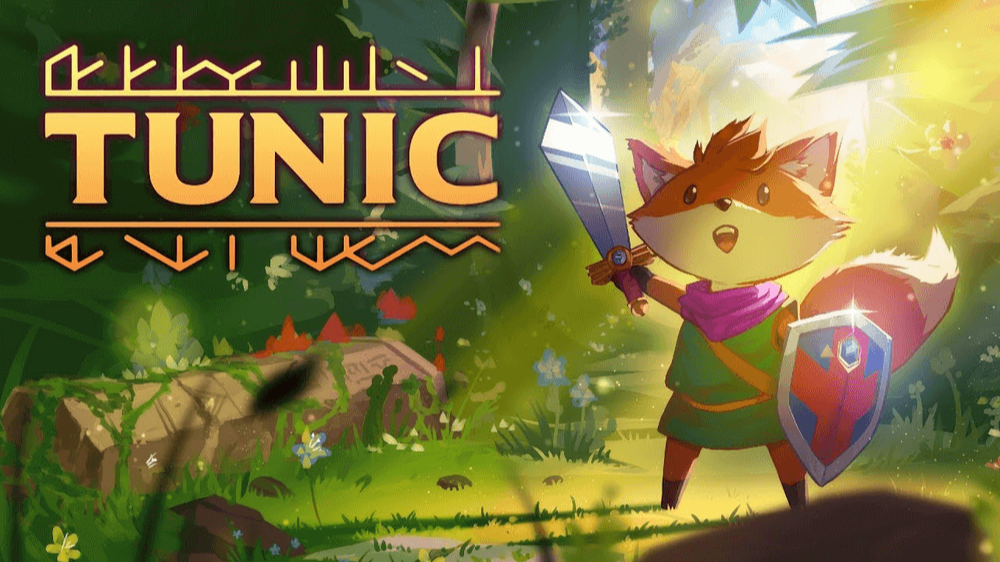
Tunic - Indie Underground
The indie game industry is a field of uncut diamonds. In the last five years indie games have stepped far ahead, because no high-budget project can surprise as much as a simple toy from an independent developer with a meager budget. A lot of indie games were created by small group of developers, and some masterpieces were created by one person. That's exactly what Tunic is, it has its own thing, which is... Okay, I'm not going to get ahead of myself.
Appearances are deceptive
First of all, I'd like to make it clear: Tunic is not a game for children. Although Tunic's overall visual style references Nintendo's creations, it's not a game that will appeal to everyone, nor will it appeal to everyone. Don't think of Tunic as something that is unobtrusive and easy to play and understand.
Now let's begin.
In fact, Tunic is somewhat difficult to talk about in the context of a review. If it were a friendly conversation or an argument on the internet I'd lay all my cards on the table, but the review format doesn't give me carte blanche to tell you anything you shouldn't...
From the looks of it, Tunic is just another adventure with an isometric view. Low-polygon fields and a small main character - a nameless little fox - as if hinting us that a touching story in mottled, warm colors awaits us... But it doesn't!
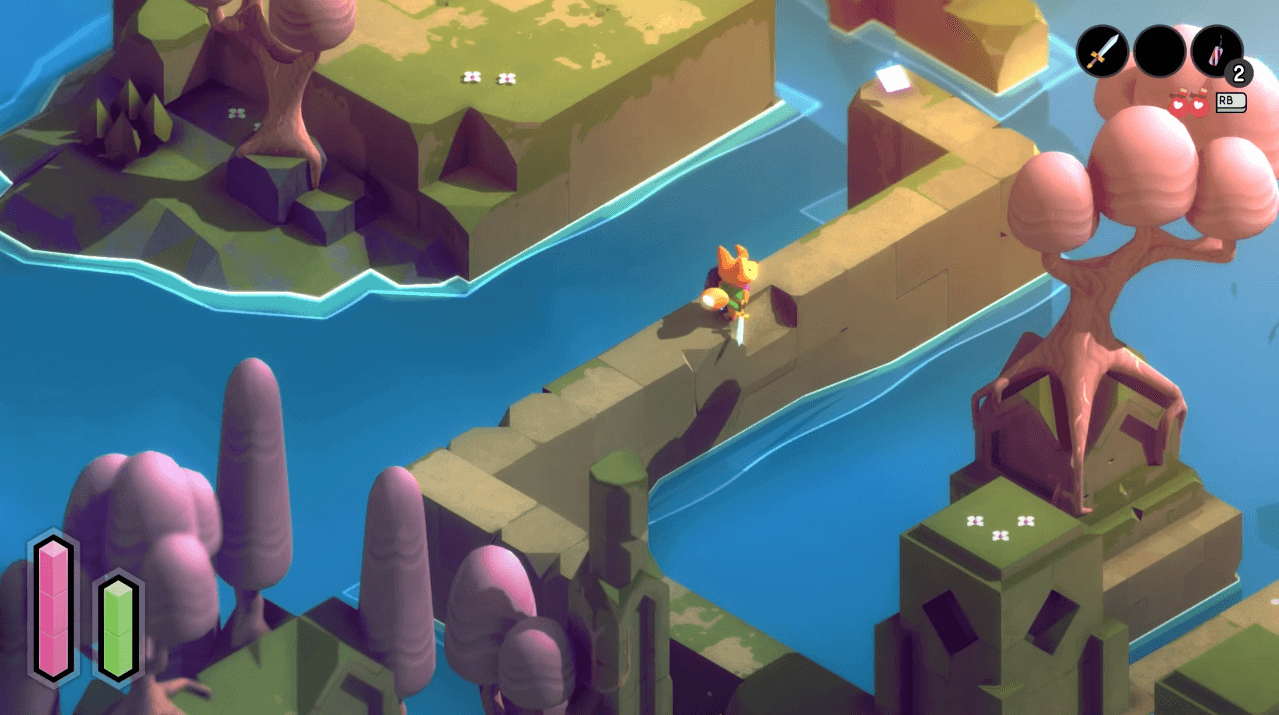
After ten minutes of passing, a strange feeling arises. You know that feeling you get when you leave home and you forget something, but you can't remember what it is? In the case of Tunic, we somehow don't notice the initial mechanic training. We've seen so many "Press L2 to shoot" tutorials in our lifetime that we've stopped taking them seriously. So in Tunic, there is no tutorial, no location guide, no mini-map, and not even a coherent explanation of the main character's motivation.
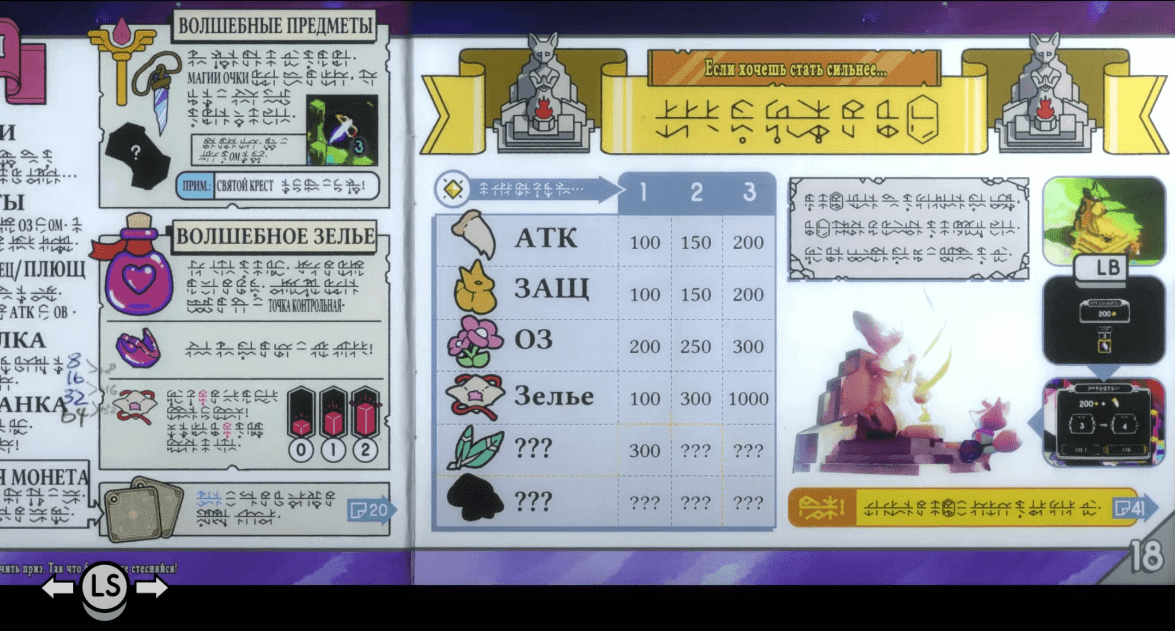
We are thrown into the world, and there - sort it out. The beginning, where there is literally nowhere to get lost, does not count - it's how they lull us into a state of alertness before the real test.
The Secrets Shrouded in Darkness...
Andrew Shuldais worked on Tunic almost single-handedly. If you look at the game with an inquisitive eye, you can see that Andrew was not influenced by his colleagues or publishers. The man created according to his own ideas of beauty and did not care about the accessibility of understanding of his creation.
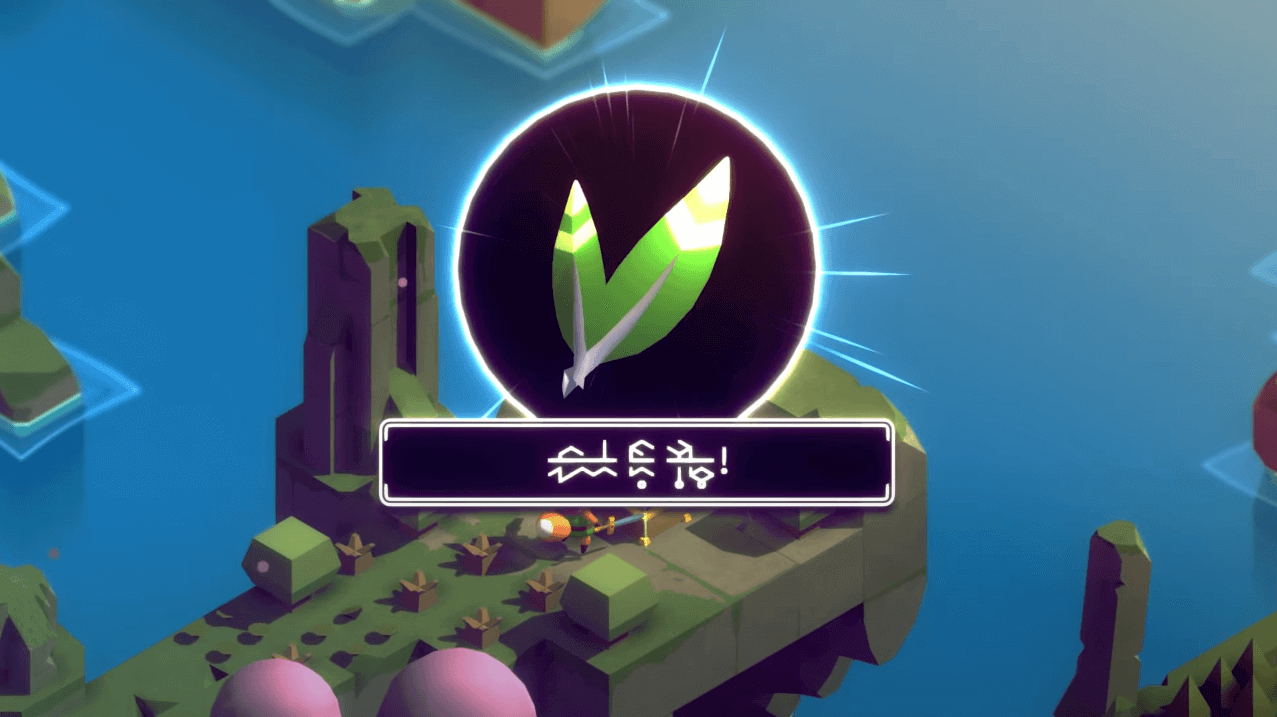
In Tunic the plot is not obvious, and all the knowledge of the local universe the player will have to extract by bits and pieces. Learning the game mechanics here drags on for the whole game, because our protagonist finds the pages of the guide, which are scattered around the world.
But as if that wasn't enough, Andrew Shuldice has created a separate language for his game. Tunic's gameplay deliberately sends us back to the days when the PlayStation 1 was the best console, and developers created their games without corrections for pampered casuals. In those days, it was considered perfectly normal to put the player in a situation with a completely unobvious decision. In those days, not everyone had the Internet, so sometimes even the most fascinating games were sent to the shelf under the pretext of "could not pass the level. And Tunic is just about these phenomena of the past.
Conceptually, we face a simple, moderately complex Action-Adventure with Soul-like elements: our little fox knows how to somersault, to put a block if he has a shield. Stamina points are spent on all this. The combat system is largely based not on tricks and combos (yes, there are only two or two of them here), but on timing, the ability to dodge blows in time and correctly calculate the danger of the enemy.
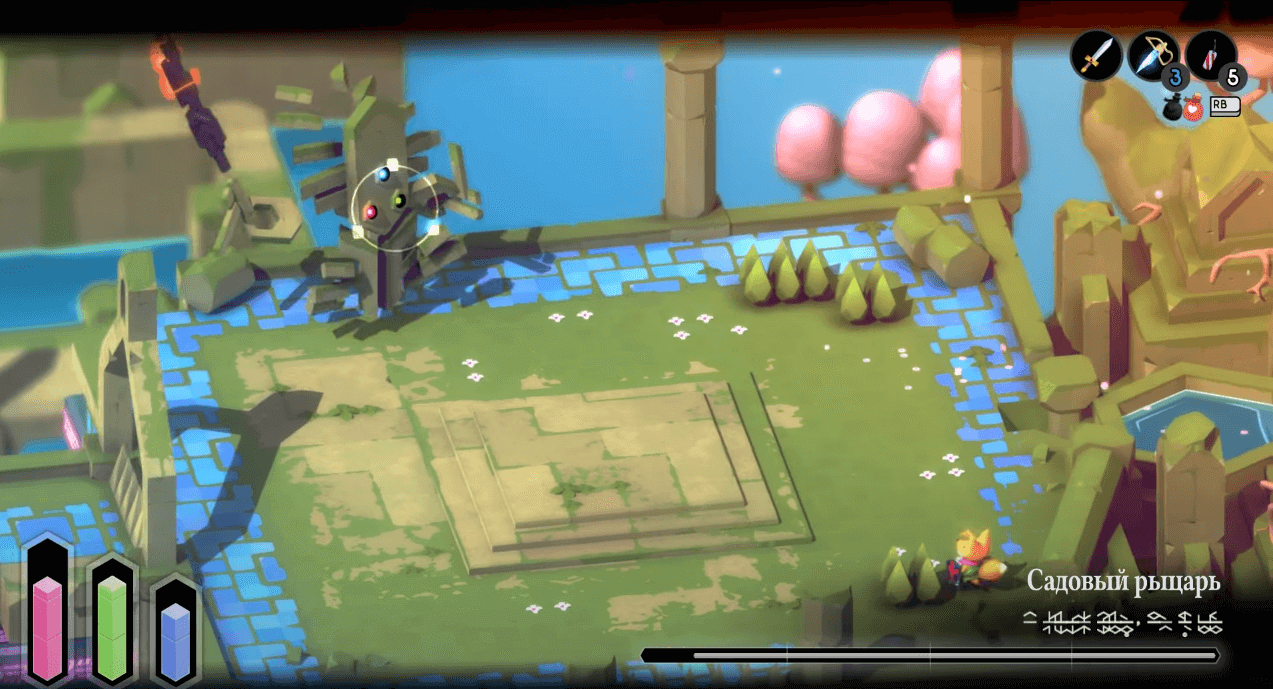
The passage will take you about 12-15 hours. The game has two endings: one for "passers-by," for those who have passed the game fleetingly, and one for "fans," for those who have succeeded in learning Tunic. The second ending is for the chosen ones, and if you consider yourself one or would like to become one, the next module is for you.
...only a select few will know
Keep reading? So you've chosen the Red Pill...
There will be spoilers next, so be careful, the wormhole is really deep...
The thing about Tunic is that in addition to the plot of saving a certain fox, there is also a meta plot. But you can open it only with the help of the same guide, whose pages are scattered throughout the game world. The pages are styled as a glossy game magazine and not found consistently. But what is written in this magazine is a separate mystery. Guide pages are full of illustrations, but written in an unknown language, so often the content of these will have to guess at the context. For example: "dark cave" *written in human* *lines of gibberish* and *the torch symbol.*
"Yeah, so I could use a torch in the dark cave. Now I have to find it," the player thinks.
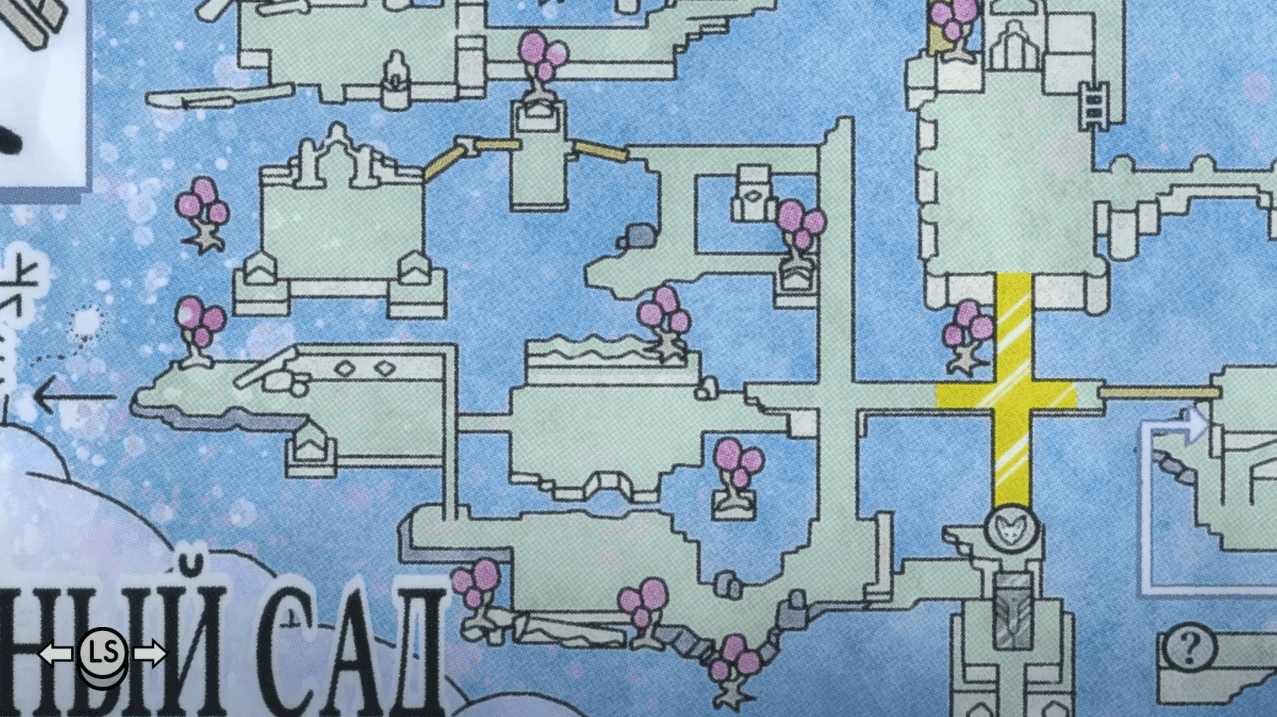
The player goes in search of the torch, but that page says: the torch is...see page 48...
There are a lot of such moments, so have patience and prepare to explore the world of Tunic up and down. Sometimes we'll have to learn how to solve game's problems - to pass it we'll have to do something with the obelisks. There's a hint about it in the guide. Unobvious hints tell us that to activate the obelisk you have to press the roll button for 3 seconds and, oh wonder, the little fox gets down on one knee and bows to the obelisk. It works!
That was just an example of the simplest riddle, there's more to come. Sometimes we're forced to go through the labyrinth from memory, to keep all of our movements in our heads, and sometimes Tunic even breaks the fourth wall: we're told that in order to pass we need a certain sacred cross. Do you know what this cross will turn out to be? An in-game object? No. A picture on the location? Cold. That cross is a cross on a gamepad!
What is the reward for all this anguish? One day you meet a door in Tunic that you can't open by any of the available means. Behind this door lies the mystery of the in-game world: how it came to be and what happens in this universe and, most interestingly, behind this door lies the true ending...
Verdict
I wouldn't recommend Tunic to everyone, and here's why: all rewards in games are divided into direct and indirect. Direct rewards are the in-game things we get for actions (gold, things, weapons, amulets - anything), and indirect rewards are the inner satisfaction, the dopamine rush of the game. You defeated a boss you couldn't defeat for a week, but your reward was some mediocre sword. But you're still happy - so the indirect reward was high.
Tunic is all about indirect rewards, like in the old days, when to pass a level in the game was such a challenge that you breathed a sigh of relief after that very level.
On the other hand, Tunic can be a formidable mockery for you, when the following in-game goals and ways to achieve them are constantly unclear. Unfortunately or fortunately, not everyone likes to "fight" games, but just wants to relax. In Tunic you don't relax, you solve the puzzle.
